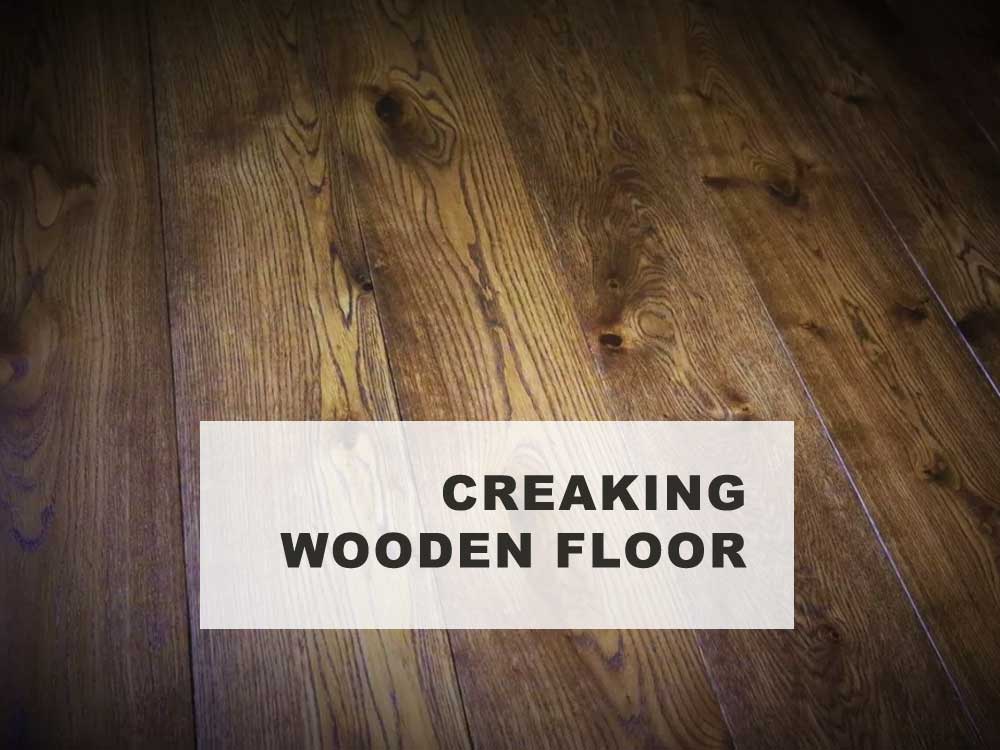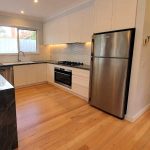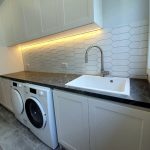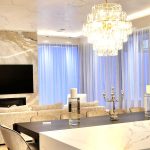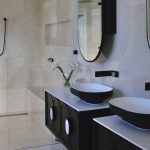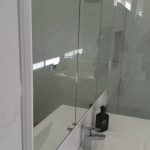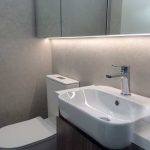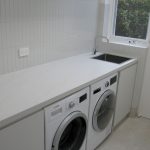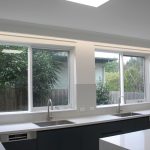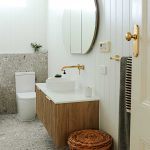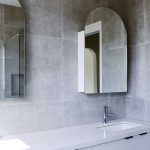The final coating and subflooring today is often represented by natural materials based on hardwood.
If the floor squeaks, what to do without opening up the floor?
Possible causes of failure, how to prevent their appearance even at the stage of construction.
Causes of creaking
Structurally, the flooring is represented by a web on the joists, without a batten on the substrate or without it. The first option consists of a bar 50*150 mm, which is not fixed to the subfloor over the entire area. Differences are compensated by pads of improvised material.
As fixing elements are used galvanized nails, self-tapping screws with threads to the cap, special adhesives with sealants. The surface is constantly under different kinds of load. The material is fibrous in nature, relatively soft, capable of deformation under the influence of moisture, biological activity or mechanical pressure.
Factors of a creaky floor
- friction of joists or floorboards due to debris between them, cracks in the elements of the structure;
- movement of metal fasteners because they have loosened or become loose in the hole;
- destruction of wood (rot, fungus or mold damage, – rust from the nails with self-tapping screws);
- sagging of battens, parquet, laminate;
- failure of the pads supporting the joists.
Squeaking is a consequence of deviations from the technology of installation, the wrong material or abuse of the floor covering. To the first often include failure to comply with the gap around the perimeter, exceeding the distance between the elements of the supporting battens. Because of this deflection of the subsequent flooring occurs. The second mistake is damp and not treated with antiseptics wood. It will deform as it dries, and from the variable humidity “infected” by fungus. The third point is excessive mechanical stress, insufficient fixation of the elements and improper wet cleaning.
Preventive actions
Consider what must be taken into account at the stage of assembling the flooring to prevent the appearance of squeaking. Knowing the causes of this unpleasant phenomenon, you can highlight several main points:
- The wood must be dry (moisture content of about 12% is allowed);
- step between the beams should be selected correctly, with furniture under the recommended values are reduced by 50-100 mm (the tables provide examples of average values);
- the working area is completely cleaned from debris, treated with compositions from possible destructive factors (moisture, fungus, insects);
- beams, boards, plywood and other wood materials must be impregnated with antiseptic agents and fully dried;
- During installation, strictly observe the horizontal and vertical level (if the construction is staggered).
Installation of the bar is carried out only on the rib. This will provide greater rigidity of the framework. To fix the elements of the floor structure you can use galvanized nails (preferably with a twisted leg), but longer cope with the loads screws on wood due to the threads with a relatively wide and deep step (if compared to universal).
You can fasten the joists to the log with the help of angles. The concrete base must be covered with waterproofing material, the beam should not reach the walls by 30-40 mm. It is recommended to lay the laths on the monolith with the use of stanchions to exclude direct contact. As fasteners are used hardware with dowels, which are immersed in the monolith to a depth of about 40 mm. If under the floor is only the ground, it is necessary to mount supporting pillars, for example, made of bricks. As a gasket here is used a roofing felt.
Elimination of creaking in the floor
To decide how to remove the creaking of the floor boards without opening the floor in a house, it is necessary to determine the root cause of the sound problem. It is necessary to conduct a visual inspection of the flooring. The process should be accompanied by walking, jumping and tapping the entire area.
Deflection of the decorative fabric on a large part of the floor.
The main reasons: gaps between the elements of the structure, sagging battens, initially thin coating (boards or plywood).
Sagging of the finish on a separate small area.
The main reasons: Cracks or breaks appear.
Slight movement of the coating, mostly from top to bottom.
The main reasons: Loosening of fastening ligaments, less often corrosion process.
Lack of visual signs, sagging, or movement.
The main reasons: Wood has begun to rot or is affected by fungus, mildew, or is eaten by wood insects.
Based on the results of the inspection, the way to solve the problem is determined. In a critical situation, you will have to completely dismantle the finish or even replace elements of the battens, rough substrate. In the early stages of identifying the causes, repairs are often limited to the implementation of actions to eliminate the creaking of the floor without breaking in.
Repairing the floor
Most of the causes of a house creaky wooden flooring lies in plain sight. Therefore, more often the floor repair in the house is limited to work with the decorative coating. Consider the most effective measures that you can do yourself.
Gaps
They appear between the elements of any prefabricated flooring. Dense joints, for example, to remove the creaking of the flooring, without removing it, filled with graphite with talc. Such means are otherwise called “dry lubrication. The disadvantage is the short-term effectiveness. Another option is candle wax.
The gaps between the slats, webs are filled with wedges or slats. The algorithm is as follows: the insert is made with a small reserve in size; the landing place is cleaned from debris and dust, the “patch” is hammered into the gap. For reliability, a clean gap should be smeared with PVA glue (can be construction or universal). Protruding excesses are eliminated with a planer and sanding.
Universal solution of sealing cracks are synthetic or natural cords (linen, jute, hemp). They are laid with a blunted thin blade, such as a trowel, chisel or screwdriver. For reliability here it is also recommended to dab the workpiece with glue. The surface after the “patch” dries is putty and sanded. Paint the areas or varnish – at the discretion of the tenants.
The most short-lived solution how to eliminate the creaking of wooden floors without disassembly – installation foam with minimal expansion (or glue-foam) or cement mortar with high water content. The latter run into the hole in portions with drying (within a day), until the void is completely filled. Small cracks are acceptable to fill with sealants and putties on wood (there are ready-made with tint).
An old way to solve when the floor squeaks – grouting gaps with a mixture of carpenter’s PVA with fine wood shavings. Here it is recommended to choose a similar rock with the base. The modern version suggests using paint and varnish instead of glue.
Violation of the technology of the floor structure
Elimination of the creak of the wooden floor with the problem of a tight connection coating to the vertical barriers is performed by forming a technological gap of about 10 mm between the elements of the floor construction and the adjacent walls. To prevent the penetration of cold or heat loss through the compensation gap formed on the perimeter, it is sufficient to place a resilient filler (insulation, substrate) in the void.
Wooden floor on a concrete base
Here you first need to determine the distance from the finish coating to the subfloor. This can be done by means of a wire, which is put through a pre-drilled hole. Next, prepare the self-tapping screws of the right length – chisel a sharp edge so as not to destroy the concrete. Screw in the hardware over the entire area, they will act as additional support under the decorative coating.
In the case of gaps between the boards in the amount of work over 30% of the floor area it is worth resorting to bulkheading. The coating is dismantled, each element is rechecked for geometry and “health”, the flooring is formed anew with maximum density. Additionally, you can apply glue under the board on the joists. This will extend the active life of the floor without the appearance of squeaking.
There is another simple way, which only conventionally involves disassembly of the floor structure when the floor squeaks. The first 4-5 pre-numbered boards are removed. They are subject (as well as subsequent floorboards) to inspection and replacement if necessary. Then one by one is attached and removed, the procedure is repeated. In this way the entire floor, including the joists, will be examined, the necessary adjustments will be made, deficiencies will be corrected and the creaking will be eliminated without complete disassembly.
Conclusion
Wood floor squeaks because of the peculiarities of the material used. Wood is soft (crumpled), fibrous (delaminated), afraid of water (rotting), cracks under load and supports the development of fungus, mold, is attractive to termites and rodents.
To prolong the silent operation of the house floor, you need to choose the right wood material with fasteners, to treat the elements of construction with protective compounds, to comply with the requirements of the technology of installation.
To eliminate the creaking it is necessary to determine the cause of its appearance. There are several ways with varying degrees of effectiveness: local repair, filling gaps and voids, local or complete replacement of structural elements.

